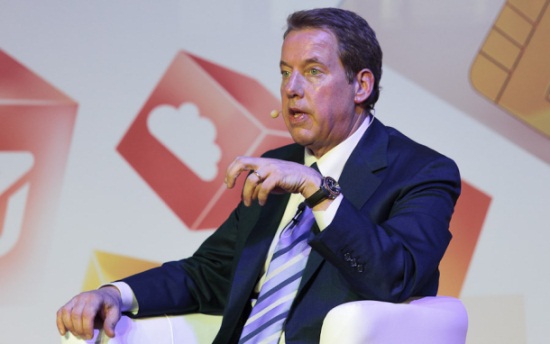Bill Ford Says Car Networks Are Coming
Posted on Aug 26, 2017 in Safety | 2 comments

At a speech before the World Mobile Congress in Barcelona, Ford Motor Co.’s Executive Chairman Bill Ford (Henry’s great-grandson) made some notable remarks about how the future will need to accommodate 4 billion cars on the road by mid-century. (We already have about a billion.)
While people around the world keep buying cars at a rapid pace, traffic jams are endemic, seemingly endless and growing: 100 miles in Sao Paulo, for instance, lasting 2-3 hours a day. You heard about the one in China lasting 11 days? Elsewhere, “the cost of congestion to the economy in England through lost time will rise to around $35 billion (€26 billion) annually by 2025. In Germany, sustaining a town of 300,000 people is estimated to require 1,000 truck deliveries daily.”
So Bill Ford proposes collaboration between public and private transport, government and the telecommunications industry, to develop an interconnected network whereby cars, bicycles and pedestrians will be part of some giant integrated system to control their movements, especially in gridlocked cities. A business opportunity here? Oh yeah.

Such a network will involve, in the next 5-7 years, communication between vehicles, better warning and traffic alert systems, shared vehicles (à la Zipcar) and so on. By 2025, we will get “semi-autonomous driving technology including driver-initiated ‘auto pilot’ capabilities and vehicle platooning in limited situations.” A giant telecom network, connected to the cloud, will emerge to deal with the problems of congestion.
In the long term—that is, after 2025—look for a more fully integrated network of all kinds of transportation, with more smart vehicles, auto-piloting, self-parking, self-storage and so on.
Now, I’m already hearing screams from all you lovers of freedom and human autonomy, but Billmade the following remarks on that score:
We’ve tended to think of cars as independent, individual devices. Now is the time for us all to look at vehicles on the road the same way we look at smartphones, laptops and tablets as pieces of a much bigger, richer network. Right now, there are a billion vehicles—a billion computing devices—out there on our roads. They’re largely unconnected from one another and the network. They operate on more than a million lines of code and have more processing power than many of today’s laptops. They have a hundred times the sensory capacity of many Smartphones and yet all of that potential is essentially just sitting there.
In my view, there will be an enormous need for such kinds of connectivity, but no one can predict how that will play out—except perhaps in cities where the world’s population tends to gravitate and where the congestion and pollution issues will press hard for such a solution.
Now, one commenter here (scroll down to DC Bruce) noted that another scenario will involve many more people working from home without the need for face-to-face office time. I think he’s right. Whether that can offset the traffic pull of giant cities (greater Mexico City today has 21 million people!) is quite another question.
Nobody is holding the crystal ball on this issue. But fewer people will be driving themselves to work in the future—I don’t see how you can disagree with that. Those that do will eventually do so in driverless cars.





.gif)


This idea is pure drivel and reminds me of FantasyLand. What? A driverless car or ZipCar can’t get stuck in traffic?? All mobile devices and networks in the world do no good if you are stuck in a 6 lane wide traffic jamb caused by a flat tire, accident or entrance to a tunnel. All the planning and design innovations in the world can’t do much when geography becomes a factor. Here where I live they blasted away a mountain to build a tunnel to get easier access to a major city. Only took eleven years, billions of dollars and was a marvel of engineering at the time. Oh, it was two lanes wide. It was outdated by the time it was finished. So much for urban planners and engineers.
Well, we still have to see if anyone survives the 2012 Mayan “end of the world” scenario.